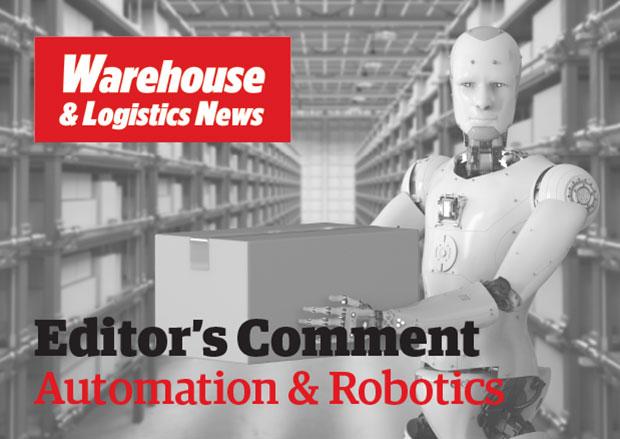Swisslog has introduced a game-changer – ACPaQ, a robotic and data-driven solution that’s revolutionising store-ready mixed case palletising. ACPaQ is a versatile solution designed to cater to various industries, including grocery, retail, food and beverage, and pharmaceuticals. At the heart of ACPaQ is a robot palletiser that seamlessly picks products from conveyor belts and neatly arranges them on pallets. Its accompanying software is the brains behind the operation, deftly controlling both the robot and the pallet assembly. But what truly sets ACPaQ apart is its staggering palletising accuracy of 99.9%.
This article was first published in the October 15th 2023 issue of Warehouse & Logistics News, subscribe to the magazine by clicking here.
 To keep up with the ever-growing demand for autonomous material handling, Interroll has developed an autonomous mobile robot (AMR) Top Module as an expansion to its Light Conveyor Platform (LCP). This roving conveyor solution has been successfully tested with MiR and OMRON, two leading mobile robotics companies who have identified it as a preferred choice. The current robotic market is evaluated with an annual growth rate (CAGR) of more than 20 percent by 2027, indicating a flourishing demand for collaborative robots and the integration of robotics in diverse fields such as logistics.
To keep up with the ever-growing demand for autonomous material handling, Interroll has developed an autonomous mobile robot (AMR) Top Module as an expansion to its Light Conveyor Platform (LCP). This roving conveyor solution has been successfully tested with MiR and OMRON, two leading mobile robotics companies who have identified it as a preferred choice. The current robotic market is evaluated with an annual growth rate (CAGR) of more than 20 percent by 2027, indicating a flourishing demand for collaborative robots and the integration of robotics in diverse fields such as logistics.
Geek+, the global leader in mobile robots for logistics, and Adidas, the leading global sportswear brand, join forces to proudly announce the grand opening of their state-of-the-art automated distribution centre in Suzhou, China, marking a remarkable achievement in their strategic partnership. This fully automated warehousing and distribution centre, covering an area of 139,000 square meters, sets a new industry standard with its high degree of speed and flexibility in warehousing logistics. It can process more than one million pieces per day, with the capacity to hold ten million pieces of apparel and footwear in its facilities.
The use of robotic technologies, specifically autonomous mobile robots (AMRs), can be of substantial benefit to most warehouses and their workflows – far greater than warehouse operators may realise. In fact, it’s possible to deploy robotic technologies without changing an entire warehouse environment, simply by focusing on where AMRs would enhance existing workflows to drive increased efficiency, productivity and where they will deliver the greatest return. One challenge is identifying areas of the warehouse operation most applicable for robotic technologies, according to Padraig Regan, chief product officer, StayLinked.
With covers made from locally sourced wood, the new generation of Stingray shuttle from TGW saves 25 tonnes of plastic per year. This is a step towards more sustainable, efficient, and reliable shuttles that transport totes, cartons, trays or hanging goods. The new generation of Stingray saves a substantial amount of energy during the hundreds of accelerations and decelerations per day.
It is exciting to see the advances in robotics, helping warehouses operate ever more efficiently.
George Simpson
Features Editor




Comments are closed.